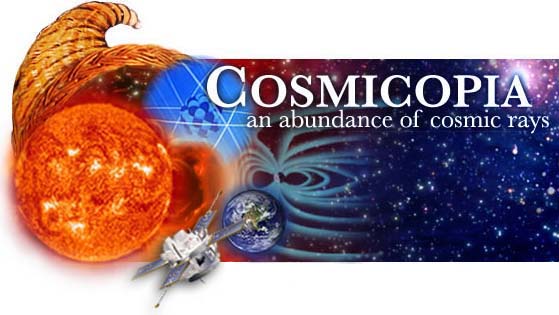
Solar Flares
There are two types of flares: impulsive and gradual. Impulsive flares accelerate mostly electrons, with some protons. They last minutes or hours and the majority appear near the solar equator. Impulsive flares occur at a rate of about 1000 per year during solar maximum.
Gradual flares accelerate electrons, protons, and heavy ions to near the speed of light, and the events tend to last for days. They occur mainly near the poles of the Sun and happen about 100 times per year.
This acceleration of solar flare particles to extremely high energies involves all the different elements in the solar atmosphere. Ions of elements such as carbon, nitrogen, oxygen, neon, magnesium, silicon, and iron, excited in this way, end up in solar cosmic rays, also called solar energetic particles (SEPs).
More about solar flares from the NASA GSFC Laboratory for Astronomy and Solar Physics...
 Solar Flares in the News:
Solar Flares in the News:
March 5, 2012: Active region on the sun spits out three flares -- NASA
February 8, 2012: NASA small explorer mission celebrates ten years and forty thousand x-ray flares -- NASA
January 27, 2012: X1.8 solar flare and CME - 01.27.12 -- NASA
January 24, 2012: Classifying solar eruptions -- NASA
November 11, 2011: 2012: Killer solar flares are a physical impossibility, experts say -- Science Daily
November 4, 2011: A 360 degree view of an X-class flare and a CME -- NASA
September 28, 2011: Violent sunspot group AR 1302 unleashes a flare -- APOD
September 19, 2011: The secret lives of solar flares -- Science@NASA
September 15, 2011: ScienceCasts: Secret lives of solar flares -- Science@NASA
September 7, 2011: Something new on the sun: SDO spots a late phase in solar flares -- NASA
August 15, 2011: X-class -- NASA HEAPOW
August 9, 2011: Sun unleashes X6.9 class flare -- NASA
August 1, 2011: Friday night light -- M9.3 class flare -- NASA
April 20, 2011: Five sunspots caused February's solar flare -- Physics Today
February 24, 2011: Monster prominence erupts from the sun -- NASA
February 16, 2011: Sun unleashes huge solar flare towards Earth -- BBC
November 8, 2010: Sunspot 1121 unleashses X-ray flare -- NASA
October 26, 2010: Sun's northern hemisphere bristling with solar flares -- NASA
October 22, 2010: Sun flares up again -- New Scientist
September 9, 2010: C3-class solar flare erupts on Sept. 8, 2010 -- NASA
August 28, 2010: A strange solar flare -- Astrobiology
August 9, 2010: M-class solar flare erupts -- NASA
October 26, 2009: MESSENGER gets closest-ever look at solar-flare neutrons -- Astronomy.com
August 14, 2009: Tiny flares responsible for outsized heat of Sun's atmosphere -- NASA
July 28, 2009: Space aged: 10 spacecraft from decades past that are still ticking -- ISEE-3/ICE (1978) -- Scientific American
May 27, 2009: The phantom torso returns -- Science@NASA
December 15, 2008: Solar flare surprise -- NASA
August 22, 2008: Some solar flares may be caused by dark matter -- New Scientist
June 21, 2008: 2012: No killer solar flare -- Universe Today
June 2, 2008: What did EV Lac? -- HEAPOW
May 19, 2008: Small star gets Swift reaction with unprecedented flare -- University of Maryland
May 6, 2008: A super solar flare -- Science@NASA
April 18, 2008: Solar flares set the sun quaking -- ESA
April 2, 2008: Hinode: Source of the slow solar wind and superhot flares -- ESA
April 2, 2008: 'Focused' solar explosions get hotter -- NASA GSFC
February 8, 2008: NASA calls for suggestions to rename future telescope mission -- NASA GSFC
January 31, 2008: New discovery on magnetic reconnection to impact future space missions -- Science Daily
December 19, 2007: Solar-like star flares up -- Astronomy.com
November 6, 2007: An X class flare region on the Sun -- APOD
August 27, 2007: Flares from Sun's far side may affect space weather of inner planets -- Science Daily
August 22, 2007: Hinode helps unravel long-standing solar mysteries -- Eurekalert
April 24, 2007: A massive explosion on the Sun -- Science@NASA
April 4, 2007: Researchers find Global Positioning System is significantly impacted by powerful solar radio burst -- NOAA News
March 30, 2007: Sun burp blasted ozone layer in 1859 -- Australian Broadcasting Company
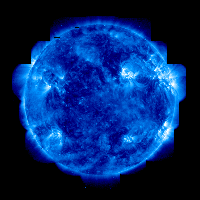
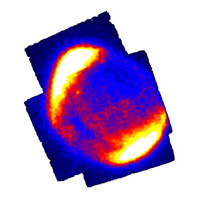
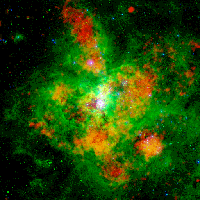
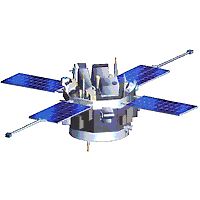
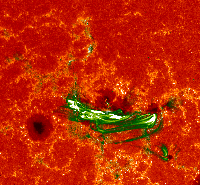
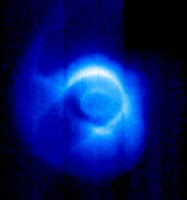
Questions and comments to: cosmicopia@cosmicra.gsfc.nasa.gov
Curator: Dr Eric R. Christian, NASA
Responsible NASA Official: Dr Eric R. Christian
Privacy Policy and Important Notices

HOME
In the News
History
Ask Us
Great Links
Glossary
Site Map
Search NASA